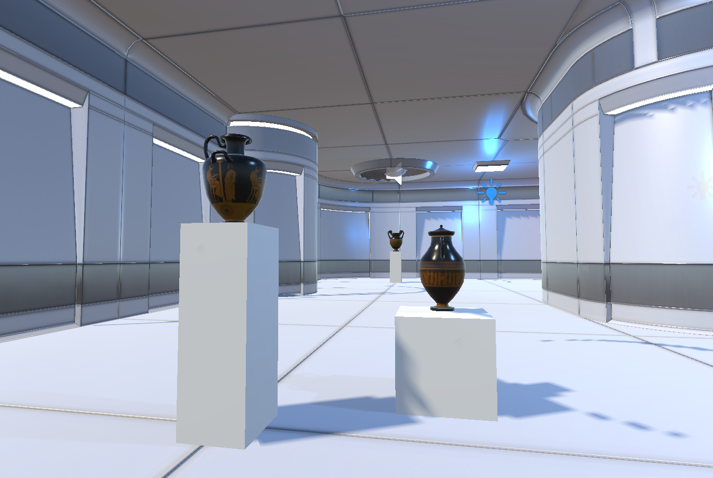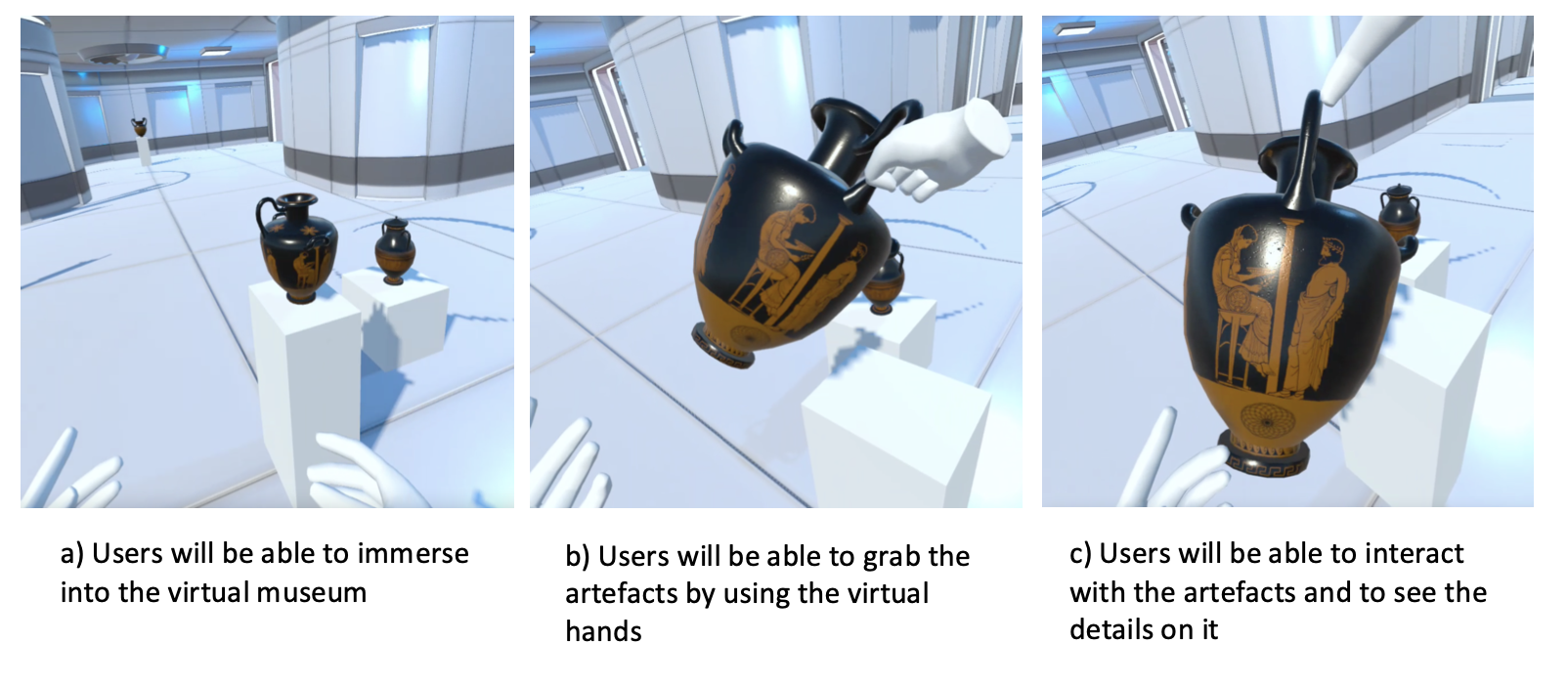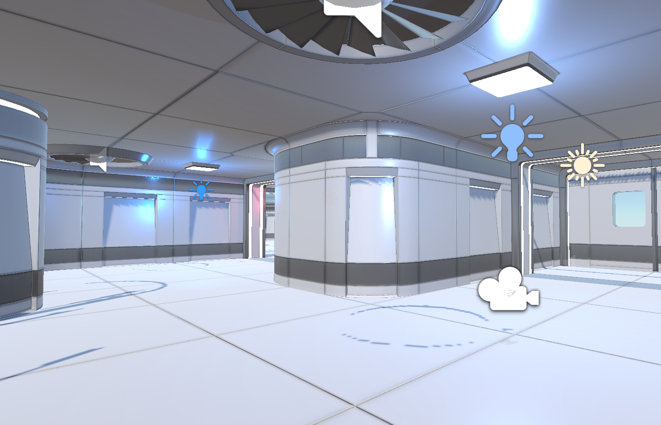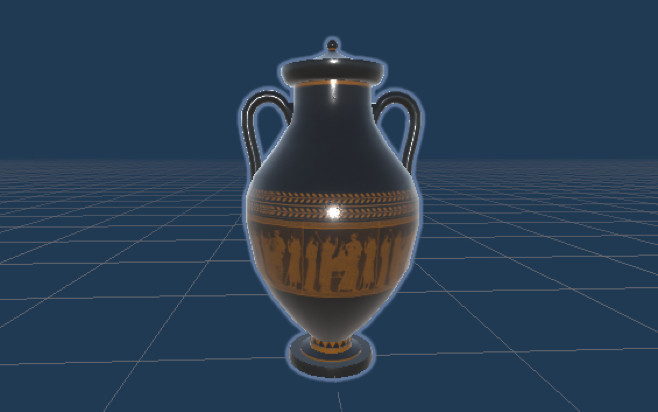Assignment 2 Report - Development of Virtual Reality Application in the context of virtual museum
1. Introduction / Overview
Museum is a place to store valuable collections and to exhibit to the public. The goal of this virtual reality application is to demonstrate how can people immerse themselves to view the artefacts by using the VR headset and how can people interact with the collections that are to the actual scale of the artefacts in details.

2. Description of the application
Speaking from the user experience, this application provides a way for users to immerse themselves into the museum without actually being there. Users will also be able to interact with the artefacts and touch the artefacts, of which is normally not allowed to in the real-world practice. From the technology perspective, this application offers a way to match the machines to human (Furness 2001) and for human to interact with the virtual world by using the Oculus headset and the hand controllers.
With the existing human computer design, the main interface problem is that people will only be able to view the artefacts in a more traditional 2D screen. Besides of that, although some of those application offers a way of interactions, they still rely on computer mouse and often will be not to scale. People will also normally be limited to view one artefacts at a time only.
By using VR as the interface technology in the context of museums, this offer a high bandwidth between human and the computer, it can greatly increase the engagement of users, creating a unique user experience by enabling physical interactions and improve the intuitiveness of the interface (Furness 2001). People will also be able to engage into the space anytime and anywhere.
3. Interaction Design
The main interaction that has been demonstrated in this application includes grabbing objects (the vase artefact) with the virtual hands and the avatar teleportation. Reason why the interactions are needed is that people will normally have very limited access to touch or move any collections stored in a real-world museum, besides of that, those existing online contents only provide very limited option for users to interact with the mouse and keyboards. Therefore, providing this active interaction for users to touch and feel the artefacts can greatly increase the user experience.
Below screenshots have illustrated one of the use case for this application: users will be able to immerse themselves into the virtual museum space and to interact with the artefacts within the museum.

There are some other possible active interactions that can be included into this context. For example, scaling the object, so that people will be able to scale the artefacts to the desired size and to view it in a more detailed way; activate buttons, so that people can press a button to show the detailed description of the collections by text or recorded video.
4. Technical Development
By using VR interface technology, a prototype has been developed by using the Unity 3D software application, which was mainly targeted for the Oculus Quest 1 headset.
Key features that have been implemented in the interface is a simulated museum space, the vase to represent the artefact collections for the museum, the virtual hands, the interactions to grab objects with the virtual hands and the avatar avatar teleportation.
By physically moving around or using the thumbsticks on the controllers, user will be able to navigate around the virtual space. While using the grip buttons (hand trigger buttons) located on the controllers, user will be able to grab the game object. When the grip buttons (hand trigger buttons) been released, the object will fall to the ground. By pressing the X (left) or A (right) buttons, users will be able to use the teleportation functions.
5. Descriptions of 3D Models
There are mainly 2 sets of 3D models that have been used in this VR application - a 3D scene and 3D vase. The purpose of the 3D scene is to stimulate the museum space, where people will be able to see collections of artefacts. While the 3D vase is to represent the artefacts sitting within the museum, of which people will be able to interact with.


References
1. 3D Museum scene (by Barking Dog): https://assetstore.unity.com/packages/3d/environments/3d-free-modular-kit-85732#reviews
2. 3D Vases (by Nobobot): https://assetstore.unity.com/packages/3d/environments/historic/greek-temple-vases-149134
3. Furness, TA 2001, 'Toward tightly coupled human interfaces', in Frontiers of Human-Centered Computing, Online Communities and Virtual Environments, Springer, pp. 80-98.
Leave a comment
Log in with itch.io to leave a comment.